Córdoba, Spain
| Córdoba | |||
|---|---|---|---|
| — Municipality — | |||
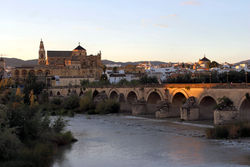 |
|||
|
|||
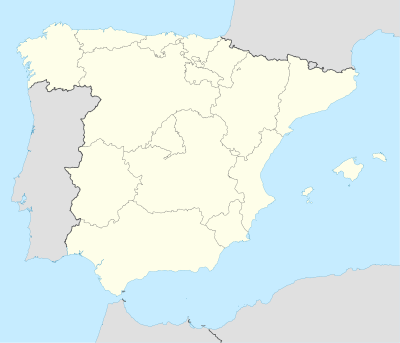 Córdoba
|
|||
| Coordinates: | |||
| Country | |||
| Autonomous community | |||
| Province | Córdoba | ||
| Judicial district | Córdoba | ||
| Founded | 8th century BC (Pre-Roman settlement), 169 BC (Roman colony) | ||
| Government | |||
| - Type | Mayor-council government | ||
| - Body | Ayuntamiento de Córdoba | ||
| - Mayor | Andrés Ocaña (IU) | ||
| Area | |||
| - Total | 1,255.24 km2 (484.7 sq mi) | ||
| Elevation | 120 m (394 ft) | ||
| Population (2008) | |||
| - Total | 325,453 | ||
| - Density | 259.3/km2 (671.5/sq mi) | ||
| Demonym | Cordobés/sa, cordobense, cortubí, patriciense | ||
| Time zone | CET (UTC+1) | ||
| - Summer (DST) | CEST (UTC+2) | ||
| Postal code | 14001 - 14014 | ||
| Official language(s) | Spanish | ||
| Website | Official website | ||
Córdoba (Spanish pronunciation: [ˈkorðoβa]; also Cordova; Qurṭuba قرطبة) is a city in Andalusia, southern Spain, and the capital of the province of Córdoba. An Iberian and Roman city in ancient times, in the Middle Ages it was capital of an Islamic caliphate. During this time Cordoba was one of the largest cities in the world. Its population in 2008 was 325,453.[1]
Today a moderately-sized modern city, the old town contains many impressive architectural reminders of when Qurṭuba (قرطبة), the thriving capital of the Caliphate of Córdoba, governed almost all of the Iberian peninsula. It has been estimated that in the latter half of the tenth century Córdoba, with up to 500,000 inhabitants, was then the most populated city in Europe and, perhaps, in the world.[2]
Contents |
History
The first trace of human presence in the area are remains of a Neandertal Man, dating to c. 32,000 BC. In th 8th century BC, during the ancient Tartessos period, a pre-urban settlement existed. The population gradually acquired the copper and silver metallurgy. The first historical mention of a settlement dates however to the Carthaginian expansion across the Guadalquivir, when the general Amilcar Barca baptized it Kartuba, from Kart-Juba, meaning "the City of Juba", the latter being a Numidian commander who had died in a battle nearby.
Córdoba was conquered by the Romans in 206 BC. In 169 the Roman consul Marcus Claudius Marcellus founded a Latin colony alongside the pre-existing Iberian settlement. Between 143 and 141 BC the town was besieged by Viriatus. A Roman Forum is known to have existed in the city in 113 BC.

At the time of Julius Caesar, Córdoba was the capital of the Roman province of Hispania Ulterior Baetica. Great Roman philosophers like Lucius Annaeus Seneca the Younger, orators like Seneca the Elder and poets like Lucan came from Roman Cordoba. Later, it occupied an important place in the Provincia Hispaniae of the Byzantine Empire (552-572) and under the Visigoths, who conquered it in the late 6th century.
It was captured in 711[3] by a Muslim army: in 716 it became a provincial capital, depending from the Caliphate of Damascus; in Arabic it was known as قرطبة (Qurṭuba). In May 766, it was elected as capital of the independent Muslim emirate of al-Andalus, later a Caliphate itself. During the caliphate apogee (1000 AD), Córdoba had a population of roughly 400,000 inhabitants,[4] though estimates range between 250,000 and 500,000. In the 10th-11th centuries Córdoba was one of the most advanced cities in the world, as well as a great cultural, political, financial and economic centre. The Great Mosque of Córdoba dates back to this time; under caliph Al-Hakam II Córdoba received what was then the largest library in the world, housing from 400,000 to 1,000,000 volumes.
After the fall of the caliphate (1031), Córdoba became the capital of a Republican independent taifa. This short-lived state was conquered by Al-Mu'tamid ibn Abbad, lord of Seville, in 1070. In turn, the latter was overthrown by the Almoravids, later replaced by the Almohads.
During the latter's domination the city declined, the role of capital of Muslim al-Andalus having been given to Seville. On 29 June 1236, after a siege of several months, it was captured by King Ferdinand III of Castile, during the Spanish Reconquista. The city was divided into 14 barrios and numerous new church buildings were added.
The city declined especially after Renaissance times. In the 18th century it had reduced to just 20,000 inhabitants. Population and economy started to increase only in the early 20th century.
With one of the most extensive historical heritages in the world (declared a World Heritage Site by UNESCO 17 December 1984), the city also features a number of modern areas, including the districts of Zoco and the railway station district, Plan RENFE.
The regional government (the Junta de Andalucía) has for some time been studying the creation of a Córdoba Metropolitan Area that would comprise, in addition to the capital itself, the towns of Villafranca, Obejo, La Carlota, Villaharta, Villaviciosa, Almodóvar del Río and Guadalcázar. The combined population of such an area would be around 351,000.
| Historic Centre of Córdoba* | |
|---|---|
| UNESCO World Heritage Site | |
 |
|
| State Party | |
| Type | Cultural |
| Criteria | i, ii, iii, iv |
| Reference | 313 |
| Region** | Europe and North America |
| Inscription history | |
| Inscription | 1984 (8th Session) |
| Extensions | 1994 |
| * Name as inscribed on World Heritage List. ** Region as classified by UNESCO. |
|
 On the Rio Guadalquivir, just downstream from the Puente Romano (Roman Bridge) is a restored Islamic water wheel that once would have raised water to the caliph's palace. |
 Roman mausoleum in the Victoria parade. |
 Patio de los Naranjos and Alminar. |
Calahorra Tower. |
 Santa Marina de Aguas Santas Church. |
 Calleja de las flores. |
 Gardens of the Alcázar. |
Entrance of the Córdoba Fair in the sunset. |
Geography
The city is located on the banks of the Guadalquivir river and its easy access to the mining resources of the Sierra Morena (coal, lead, zinc) satisfies the population’s needs.
The city is located in a depression of the valley of the Guadalquivir. In the north is the Sierra Morena, which defines the borders of the municipal area.
Córdoba is one of the few cities in the world that has a near-exact antipodal city – Hamilton, New Zealand.
Climate
Córdoba has a Mediterranean climate with Atlantic coastal influences. Winters are mild with isolated frosts.
Summers, with increased daily thermal oscillations, have the highest maximum temperatures in Europe, exceeding 40 °C occasionally. Local minimum summer temperature is 27 °C, the highest in Spain and Europe. Precipitation is concentrated in the coldest months; this is due to the Atlantic coastal influence. Precipitation is generated by storms from the west that occur more often from December through February. This Atlantic characteristic then gives way to a hot summer with significant drought more typical of Mediterranean climates.
Annual rain surpasses 500 mm although there is a recognized inter-annual irregularity. In agreement with the Köppen climate classification, the local climate can be described as Csa.
Registered maximum temperatures at Córdoba Airport (located at 6 km of the city) are 46.6° (23rd, July 1995) and 46.2° (1st, August 2003). The minimum temperature is -8.2° (28 January 2005).
| Climate data for Córdoba | |||||||||||||
|---|---|---|---|---|---|---|---|---|---|---|---|---|---|
| Month | Jan | Feb | Mar | Apr | May | Jun | Jul | Aug | Sep | Oct | Nov | Dec | Year |
| Source: Agencia Estatal de Meteorología[5] | |||||||||||||
May celebrations
Tourism is especially intense in Córdoba during May because of the weather and as this month hosts three very popular festivals.[6]
The May Crosses Festival takes place at the beginning of the month. During three or four days, crosses of around 3 meters of height are placed in many squares and streets and decorated with flowers and a contest is held to choose the most beautiful one. Usually there is regional food and music near the crosses.
The Patios Festival is celebrated during the second and third week of the month. Many houses of the historic center open their private patios to the public and compete in a contest. Both the architectonic value and the floral decorations are taken into consideration to choose the winners. It is usually very difficult and expensive to find accommodation in the city during the festival.
Córdoba's Fair takes place at the ending of the month and is similar to, if smaller than, the better known Seville Fair.
Main sights
Religious architecture
- Great Mosque of Córdoba, which contains columns that date back to the Roman and Visigothic periods, primarily constructed during the Umayyad period (its construction started in 784). It was converted into a Cathedral after the Reconquista.
- Córdoba Synagogue (14th century)
- Fernandine and Alphonsine-style churches (13th century)
- San Nicolás de la Villa'
- San Miguel
- Santa Marina
- San Agustín
- San Andrés
- San Lorenzo
- San Pedro
- La Magdalena
- San Pablo
- Various monasteries and convents
- Walcha Cave (built in 1489)
Civil and military architecture
- Alcázar of the Christian Kings (14th century)
- Palace of Viana with its flowered patios (16th century)
- Royal residences and palaces
- The Tower of Calahorra (14th century)
- The Plaza Vieja or Plaza Mayor
- Puerta del Puente (Bridge Gate, 16th century)
- Torre de la Malmuerta
- Walls and towers of the Muslim and also Christian period
Archaeological sites
Roman archaeological remains
- Roman Temple
- Roman Theatre, of which only scanty remains can be seen today. With a cavea of 124.23 meters of diameter (6 meters less than the Theatre of Marcellus in Rome), it was the largest theatre in Roman Hispania.
- Roman Mausoleum (1st century AD). It is a funerary monument discovered in 1993, located on the ancient road leading to Seville.
- Archaeological site of Cercadilla
- Roman bridge
Islamic archaeological remains
- Guadalquivir Mills
- Archaeological site of Madinat Al-Zahra (10th century)
Museums
- Archeological and Ethnological Museum of Córdoba.
- Julio Romero de Torres Museum.
- Museum of Fine Arts.
- Dioceses Museum.
- Baths of the Fortress Califal.
- Botanical Museum of Cordova.
- Three Cultures Museum.
- Bullfighting Museum.
- Molino de Martos Hydraulic Museum.
Theatres
- Gran Teatro de Córdoba.
- Teatro Axerquía.
Parks and Gardens
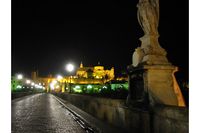
- Garden of the Victory
- Garden of the Rivas Duc
- Garden of the Agriculture
- Garden of the Conde de Vallellano
- Garden of Juan Carlos I
- Park Cruz Conde
- Sotos de la Albolafia
- Balcón del Guadalquivir
- Peri-urban park of Los Villares
- Park of the Miraflores
Notable people
Cordova was the birthplace of five famous philosophers and religious scholars:
- In Roman times the Stoic philosopher Seneca,
- In classical Islamic times
- The Islamic scholar ibn Hazm, a major Muslim theologian and legal jurist,
- The Islamic scholar ibn Rushd or Averroes, one of Islam's most famous and eminent scholars and philosophers,
- Imam Abu 'Abdullah al-Qurtubi, a leading jurist of the Maliki madhab, and
- The rabbi and Jewish philosopher Moses Maimonides.
Córdoba was also the birthplace of
- The Roman poet Lucan,
- The medieval Spanish poet Juan de Mena, and
- The Renaissance poet Luis de Góngora, who lived most of his life and wrote all his most important works but one in Córdoba.
In addition some scholars have linked to Córdoba
- The Renaissance philosopher Abraham Cohen de Herrera and
- The prominent Jewish mystic Moses ben Jacob Cordovero
Both of these were evidently descended from families which lived in Córdoba before the expulsion of the Jews from Spain.
More recently, several flamenco artists were born here as well, including
- Vicente Amigo
- Joaquín Cortés
- Fosforito
- Paco Peña
- Juan Serrano (Flamenco)
- Fernando Tejero
Transport
The city is connected by high speed trains to the main Spanish cities: Madrid, Barcelona, Seville, Málaga and Zaragoza. More than 20 trains per day connect the downtown area, in 54 minutes, with Málaga Airport.
Twin towns — sister cities

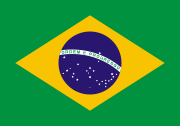 São Paulo, Brazil[7][8][9]
São Paulo, Brazil[7][8][9]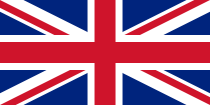 Manchester, United Kingdom[7][10]
Manchester, United Kingdom[7][10] Bourg-en-Bresse, France
Bourg-en-Bresse, France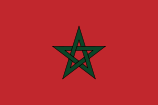 Fes, Morocco[7]
Fes, Morocco[7]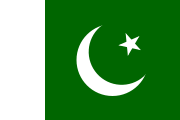 Lahore, Pakistan[7]
Lahore, Pakistan[7] Bethlehem, Palestinian Authority[11]
Bethlehem, Palestinian Authority[11]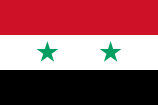 Damascus, Syria[7]
Damascus, Syria[7]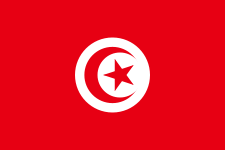 Al Qayrawan, Tunisia[7]
Al Qayrawan, Tunisia[7]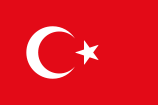 Adana, Turkey
Adana, Turkey Istanbul, Turkey
Istanbul, Turkey Izmir, Turkey
Izmir, Turkey Bukhara, Uzbekistan[7]
Bukhara, Uzbekistan[7]
References
- ↑ Instituto Nacional de Estadística
- ↑ "geography.about.com". http://geography.about.com/library/weekly/aa011201a.htm.
- ↑ "Córdoba History". http://www.cordoba24.info/english/html/geschichte.html. Retrieved 16 July 2009.
- ↑ J. Bradford De Long and Andrei Shleifer (October 1993), "Princes and Merchants: European City Growth before the Industrial Revolution", The Journal of Law and Economics (University of Chicago Press) 36 (2): 671–702 [678]
- ↑ "Valores Climatológicos Normales. Córdoba / Aeropuerto". http://www.aemet.es/es/elclima/datosclimatologicos/valoresclimatologicos?l=5402&k=and.
- ↑ Mayocordobes.es
- ↑ 7.0 7.1 7.2 7.3 7.4 7.5 7.6 7.7 La Cooperación Directa en el Ayuntamiento de Córdoba - Córdoba City Council Web
- ↑ Prefeitura.Sp - Descentralized Cooperation
- ↑ International Relations - São Paulo City Hall - Official Sister Cities
- ↑ Corporaciones locales españolas hermanadas con Europa - Federación Española de Municipios y Provincias
- ↑ The City of Bethlehem has signed a twinning agreements with the following cities Bethlehem Municipality.
External links
- Official website of the city council. (Spanish)
- Córdoba Mosque and Roman Bridge - The second largest mosque and a Roman Bridge with 17 arches Córdoba, Roman City(Spain)-
- Tourism and Monuments in Córdoba (English)
- Tourism and Monuments in Córdoba (Spanish)
- Córdoba travel information (English)
- (Spanish) Natural Monument Sotos de la Albolafia
- Córdoba: The City that Changed the World by The Guardian
|
|||||||||||||||||||||||||||||||||

